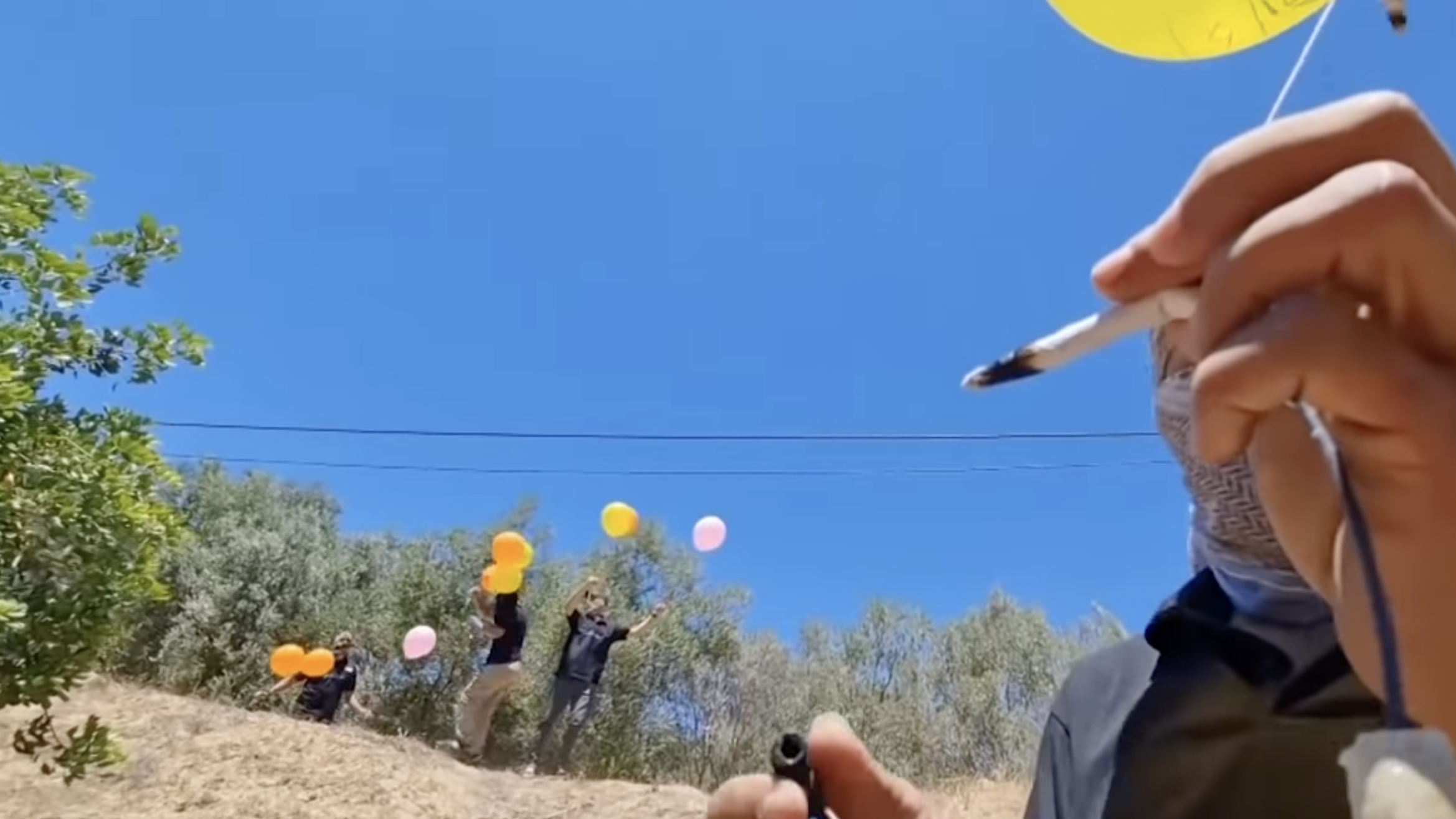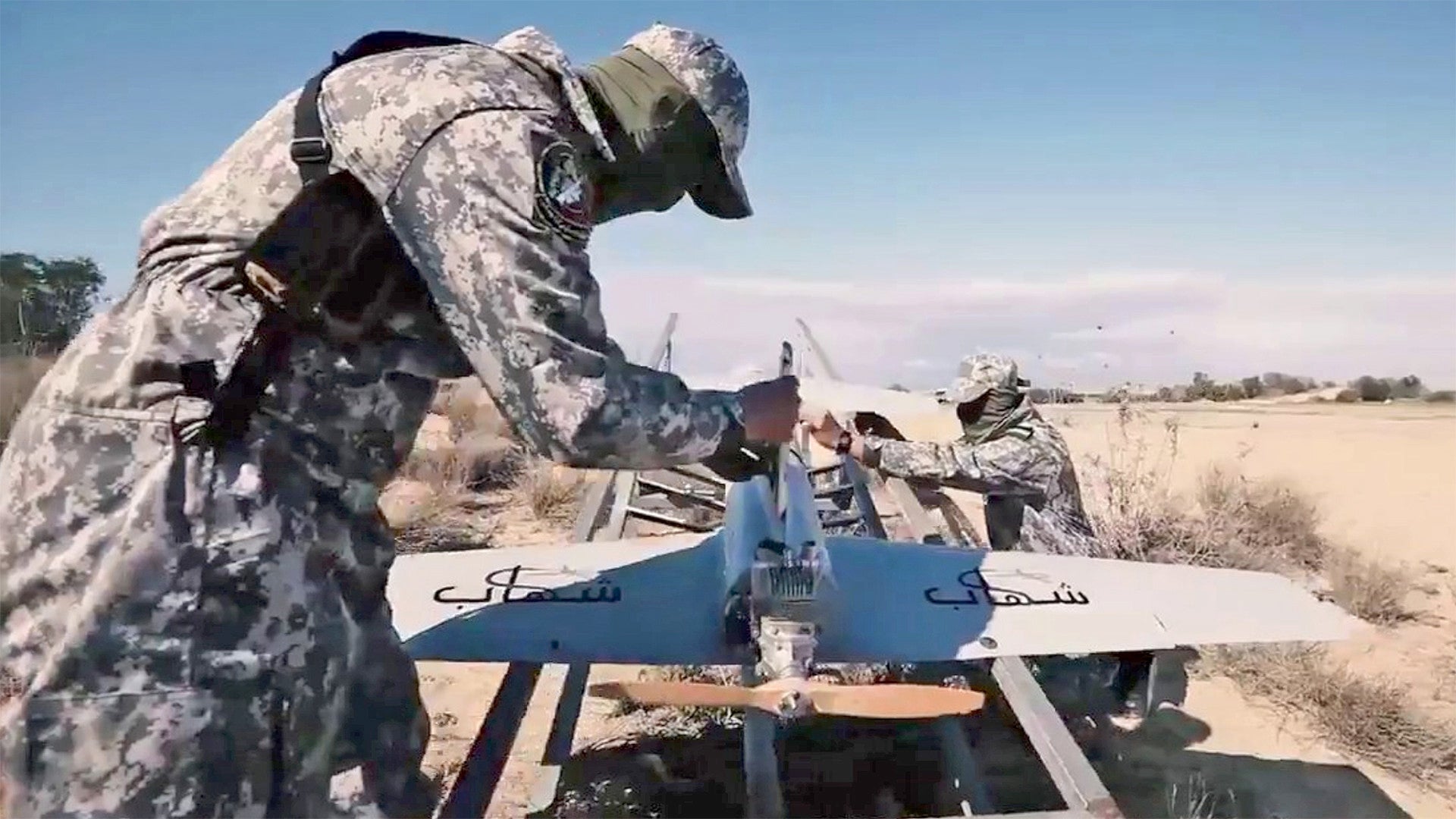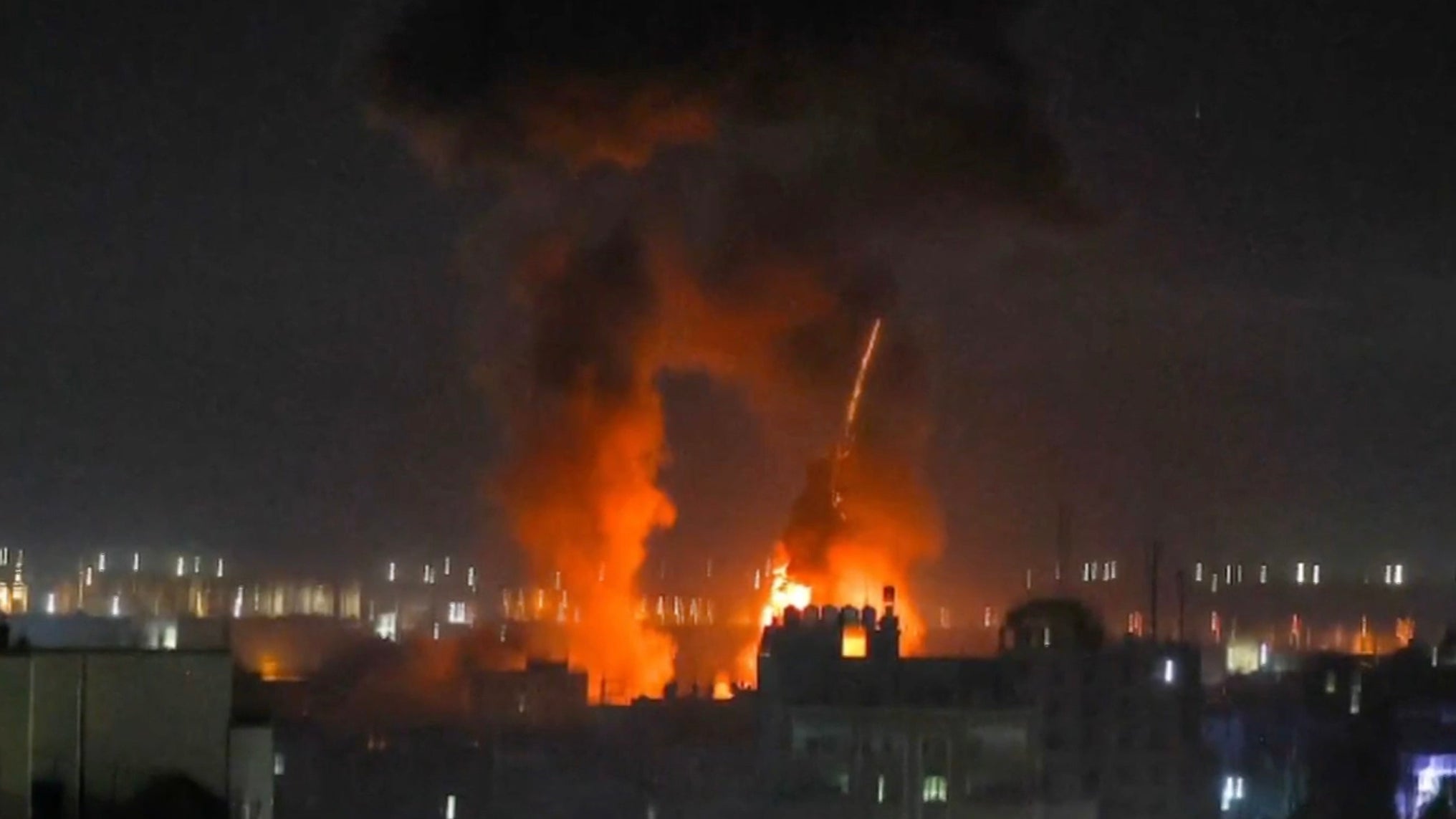The Israeli Air Force has flown a series of airstrikes against targets in the Gaza Strip associated with the Palestinian group Hamas. The flare-up marks the end of a ceasefire that had held following an 11-day conflict between Israel and Hamas last month. The strikes early this morning were in response to Palestinian militants launching helium-filled balloons carrying incendiary devices from Gaza, a self-governing Palestinian territory. The latest round of violence also comes just three days after a new Israeli government took office.
The Israel Defense Forces (IDF) said that its aircraft hit “military compounds belonging to the Hamas terror organization, which were used as facilities and meeting sites for terror operatives in Hamas’ Khan Yunis and Gaza Brigades.” The targets were located in both Gaza City and the town of Khan Younis, in the south of the Gaza Strip. So far, there have been no confirmed reports of any casualties.

According to the the Israeli fire services, the indenciary balloons resulted in 20 blazes in open fields close to the Gaza border. Similar tactics have been employed by Hamas since at least 2018, when The War Zone reported on the militants’ use of kites carrying incendiary payloads from the Gaza Strip into Israeli territory, causing considerable destruction.
“The Hamas terror organization is responsible for all events transpiring in the Gaza Strip, and will bear the consequences for its actions,” the Israeli Air Force tweeted, while the IDF announced it was “ready for all scenarios, including renewed fighting in the face of continued terrorist acts emanating from Gaza.”
The balloon attacks came after a march by Israeli ultranationalists through Arab areas of East Jerusalem yesterday. This was a scaled-down version of the same march that had been planned for last month, but was canceled as tensions spiraled out of control, leading to a brief, but significant conflict between Israel and Palestinian groups in Gaza in May. The revised march was met by Palestinian protesters against whom Israeli police fired rubber bullets. According to Palestinian medics, more than 30 protesters were injured and there are reports of at least 17 Palestinians being arrested.
Other protests took place yesterday within Gaza, with reports that one person was shot in the leg by an Israeli sniper. There are, however, no indications so far that Hamas has resumed launching rockets — on suicide drones — from Gaza. According to Al Jazeera, the militant groups have not yet received any official orders to retaliate, while Israel’s Army Radio reported that Israel informed Egyptian mediators that direct Hamas involvement in launching the balloons would put long-term truce talks at risk.

Large-scale rocket attacks by Hamas aimed at central Israel became a defining feature of last month’s brief conflict, and these were met in turn by IDF strikes against Gaza, as well as attacks launched by Israeli naval vessels; in all, it’s been reported that militants fired more than 4,000 rockets into Israel from Gaza. According to the United Nations Office for the Coordination of Humanitarian Affairs, as of May 25, 253 people had been killed in Gaza, while rockets launched from there into Israel killed 12. A ceasefire came into effect on May 21.
The context of this latest outbreak of violence is somewhat different, since it comes so soon after Israel’s new government was formed. Although a historic cross-party coalition, including Arab Israelis, the government is led by hardline right-wing nationalist Naftali Bennett, who is an advocate for the settler movement in the Palestinian territories, and who has in the past faced criticism for his comments about Palestinians. “I have killed lots of Arabs in my life — and there is no problem with that,” he was reported as saying in 2013.
Bennett has also spoken specifically about the threat of incendiary balloons. “An explosive balloon is like an anti-tank missile,” Bennett tweeted in 2019, “whoever launches one is a terrorist who is trying to murder Israelis and must be hit.”
Clearly, these latest events will be a test for the new Israeli government, which includes lawmakers with widely differing opinions on the protests in East Jerusalem. This part of the holy city was annexed by the IDF in 1967 but contains important religious sites for Muslims, Jews and Christians. For Palestinians, Jerusalem is their proclaimed capital, while most of the international community does not recognize Israeli sovereignty over the city.
Reflecting the moderate, centrist position within the Israeli government, Israeli Foreign Minister Yair Lapid took to Twitter to denounce the latest protests in East Jerusalem. “It is inconceivable that one can hold the Israeli flag in one hand and shout ‘Death to the Arabs’ at the same time,” he wrote. “These people are a disgrace to the people of Israel.”
Since tensions in Jerusalem around the planned march by Israeli ultranationalists played a key role in sparking last month’s Gaza War, there was a heavier police presence in the city this time around. Police redirected the march to avoid some Muslim areas of the city, but it was still met by Palestinian protesters and hostile words from Hamas, which called for “valiant resistance” to the march.
So far, that resistance has not seen a return to rocket attacks from Gaza, although ahead of the march, the IDF reportedly bolstered its Iron Dome defense systems to tackle potential rocket barrages. In the last round of fighting, the Iron Dome systems and their Tamir interceptors were able to knock down hundreds of Hamas rockets. The Iron Dome is known to be able to destroy rockets, artillery shells, and mortar rounds, but it is not designed to be used against basic balloons.

There is also a possibility that the militants are still rebuilding their stocks of rockets since the conflict last month and there is little doubt that the IDF attacks caused significant damage to rocket manufacturing centers and rocket-launching infrastructure. Meanwhile, other reports suggest that Israel and Egypt withholding financial support and material assistance to Gaza is forcing Hamas into restraint.
The IDF has responded swiftly to the attacks by Hamas incendiary balloons, but with the situation still fraught since the previous Gaza conflict, it remains to be seen exactly how the militants in Gaza will respond to this and how the Israeli government will manage the strained situation in East Jerusalem.
Contact the author: thomas@thedrive.com
